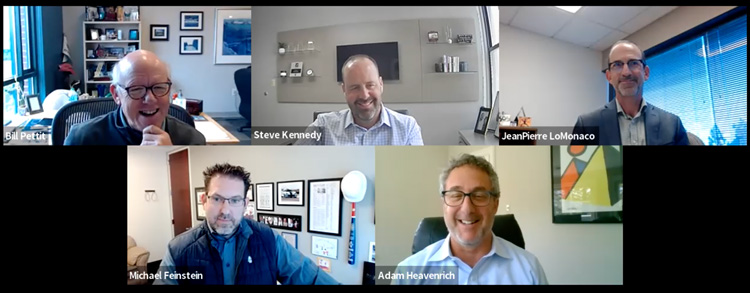Inflation and interest rates are both going up at levels not seen for decades, if ever, in the United States. As a result, both topics have entered the general consciousness of the American public in a way rarely seen before, according to JP LoMonaco, president of Valuation & Information Group.
“I haven’t said the words inflation or higher interest rates in more than 20 years, but they have definitely creeped into the American pop psyche. Chances are that you’re likely to start an elevator conversation with inflation more than weather or last night’s game.”
One of the main results of these factors, combined with supply chain and labor challenges, is that ground-up construction projects for senior living have become even more challenging.
“The combination of inflation and rates are making new development projects very difficult,” said Bill Pettit, president of R.D. Merrill Co. “We’re having a heck of a time getting new projects to pencil right now. Consequently, we could be headed into a period of constraint on new supply.”
Both observations came during a webinar titled “Inflation and Rising Interest Rates – Doom or Boom for the Seniors Housing Industry?” LoMonaco moderated the panel of experts, which also included Michael Feinstein, managing director at Focus Healthcare Partners; Steve Kennedy, executive managing director, VIUM Capital; and Adam Heavenrich of Heavenrich & Co. Valuation & Information Group sponsored the webinar.
Of course, there are benefits to a slow-down in new development. With seniors housing occupancy still at historic lows as a result of the COVID-19 pandemic, low supply of new construction both aids with census because of low inventory and opens up opportunities for purchasing value-add acquisitions.
“Inflation and the supply chain challenges have done nothing to slow down the pace of increase in materials and project costs. It will normalize again, but not in the near term” said Pettit. “Right now the REITs are coming out of COVID looking at lightening the bottom end of their performance. They’re pushing value-add assets out into the markets. That’s creating opportunities for well-capitalized operators to take advantage of those value-add projects. For the next two to four years, there could be some real opportunities in this space.”
Pettit added that Merrill’s previous fund, closed in 2016, was almost exclusively for new developments, but the fund currently being raised will be almost entirely for value-add acquisitions.
But expect other investors to notice this trend, warned Feinstein. The COVID-caused stress on other industries was short-lived, meaning that savvy buyers are looking at seniors housing as the one sector where discount acquisitions are available.
“There are distressed opportunities in seniors housing that are not found in other sectors of real estate,” he said “A lot of buildings were delivered in January 2020, just before the pandemic. That creates a real struggle on lease-up, and it also runs a lot of projects out of construction reserves. So you have that whole dynamic of the last wave of construction loans that may be distressed against a backdrop where there’s no distress in other sectors.
“There hasn’t been a real shovel in the ground en masse in two years. Supply and demand is going to be completely out of whack if you look forward five to 10 years. That’s an opportunity.”
Unfortunately, many investors are looking for better returns than before the pandemic as they saw first-hand the risks involved in the sector, noted Heavenrich.
“In addition to the headwinds on higher construction costs, there’s a higher perceived risk overall and higher need for return on the equity side.”
All the panelists agreed, though, that the industry is looking healthy for the long-term, as a higher percentage of the population passes retirement age every day. That should easily overcome the current struggles presented by high interest rates and inflation.
“At the end of the day, it’s a lot of short-term noise right now,” said Kennedy. “But we’ve learned how, as an industry, to manage COVID. We also have this tailwind we see coming from a demographic perspective. That gives lenders and investors, especially long-term investors, confidence that we’re able to ride this out.”
To view the full webinar, click here.
— Jeff Shaw

